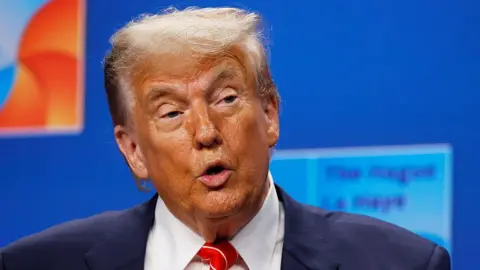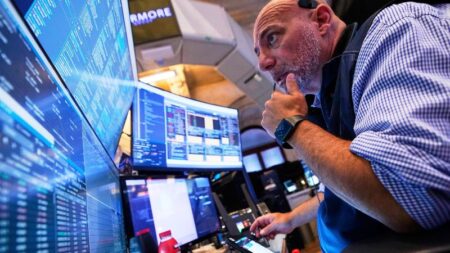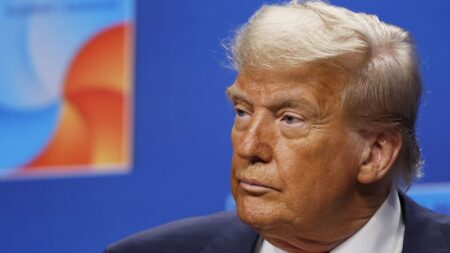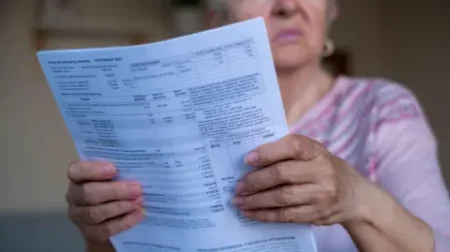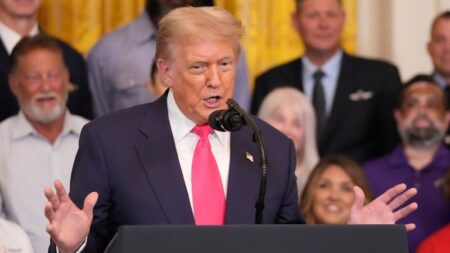The recent fluctuations in currency markets have highlighted significant developments impacting the British pound and the US dollar. This has particularly been influenced by ~news surrounding former President Donald Trump, whose potential decisions have prompted investors to reassess their strategies. Notably, the pound surged to its highest level against the dollar in nearly four years, reaching a value above $1.37—a milestone not seen since October 2021. Such an increase reflects broader anxiety among traders about Trump’s rumored moves regarding the Federal Reserve’s leadership, which have shaken confidence in the stability of US monetary policy.
The catalyst for this currency shift stems from a Wall Street Journal report suggesting that Trump was considering naming a replacement for Jerome Powell, the current chair of the US central bank, before the end of the year. This revelation coincided with Trump’s recent public comments, wherein he derided Powell as “terrible” and indicated that he was evaluating “three or four candidates” for the position—despite Powell’s term not being slated to expire until May 2026. With the Federal Reserve’s independence from political influence being a cornerstone of its operations, speculation over Trump’s intentions has raised alarms regarding the potential risks to this autonomy.
Market analysts have expressed concern that if Trump were to appoint a chairman who leans more towards his economic views, it could endanger the effectiveness of the Fed’s monetary policies. Such developments come at a time when inflation concerns are already elevated, primarily due to the proposed tariffs that Trump has threatened to impose on various countries—a move that Powell has acknowledged may have inflationary impacts on the economy. The Fed has remained cautious, opting to wait and analyze the economic repercussions once these tariffs come into effect.
The broader economic context reveals that the US economy experienced a contraction in the first quarter of this year, marking its first decline in three years. This downturn was largely attributed to reduced government spending and heightened import levels as businesses moved to stockpile products ahead of anticipated tariffs. In light of this scenario, JP Morgan has moderate optimism regarding the recession probability, estimating it to be around 40%, which remains relatively high compared to pre-pandemic norms.
Expert opinions have suggested that the current dollar weakness could be attributed to market perceptions of the evolving political landscape, particularly regarding Trump’s interaction with the Federal Reserve. Kaspar Hense of RBC BlueBay Asset Management has articulated that traders appear to be betting against the dollar as confidence in institutional independence erodes. Similarly, Kit Juckes, chief FX strategist at Societe Generale, noted that the market seems to be pricing in the likelihood of Trump favoring a candidate who may bend towards his economic preferences, thereby heightening concerns about the Fed’s credible independence.
The integrity of the Fed is crucial for maintaining trust in the financial markets, particularly concerning inflation control. Should the confidence in the Federal Reserve’s self-governance be undermined, it could lead to an increase in borrowing costs, as investors might demand higher interest rates to compensate for perceived risks associated with holding debt.
In this environment, potential candidates for Powell’s replacement have emerged, most notably Kevin Warsh, a former Fed governor, and current US Treasury Secretary Scott Bessent. Although Trump has remarked positively on Warsh’s reputation, it’s clear that the balance of power lies in who ultimately occupies the Fed’s leadership role. The implications of this decision, and the ensuing criticism Trump has already directed towards Powell, will undoubtedly ripple through financial markets as stakeholders grapple with an uncertain economic future—especially as policy decisions could pivot significantly with a change in chairmanship.
In summary, the recent oscillation of the pound and the dollar has been deeply influenced by political rumblings surrounding the Federal Reserve, led by the unpredictable interventions of Donald Trump. This evolving narrative poses substantial risks not only to the trust in the Fed but also to the broader economic landscape as stakeholders adjust their strategies amidst ongoing uncertainty.





